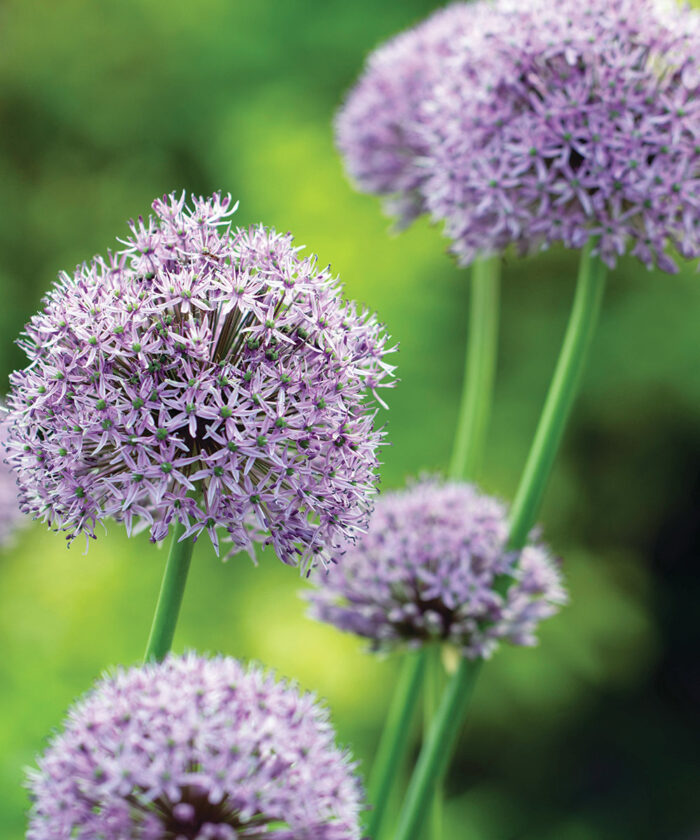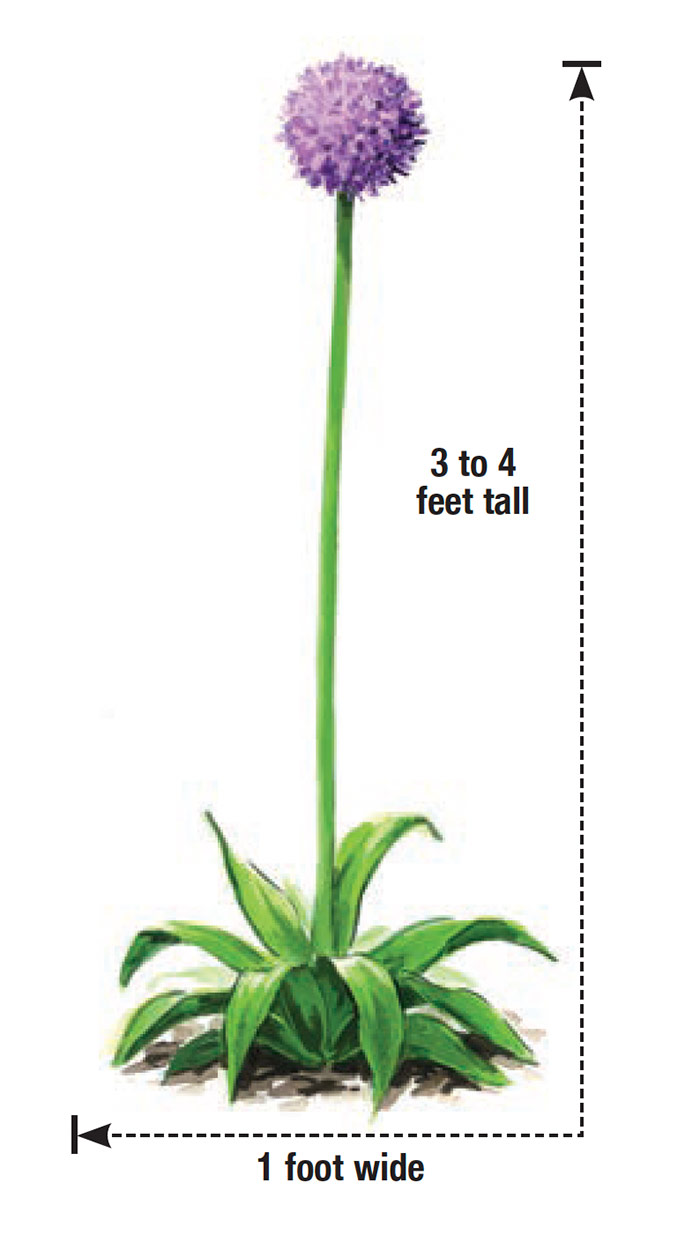
I have grown alliums for their stunning architectural form for years, but one is by far my favorite: ‘Ambassador’. Although its bulb is related to garlic, onions, and shallots, this ornamental garden variety is a show-stopper. There are many other allium cultivars out there, ranging in size, color, and form, but ‘Ambassador’ rises to the top of my list for a lot of reasons.
Blooming for us in central North Carolina in late spring to early summer, ‘Ambassador’ adds an exclamation point to our beds and borders. It is known for its longer bloom time and upright, sturdy stems that hold high the 6- to 7-inch rounded clusters of deep purple starlike flowers. Extremely easy to grow, it thrives year after year in many different soil types, from clay-loam to sandy grit. Once established, this variety can tolerate drier conditions, but it does not like wet feet. Like all alliums, ‘Ambassador’ is great at attracting pollinators but isn’t favored by rabbits, deer, or rodents.
At Sarah P. Duke Gardens at Duke University, we interplant ‘Ambassador’ with other perennials and annuals that offer color at the same bloom time. ‘Moonshine’ yarrow (Achillea ‘Moonshine’, Zones 3–9), giant silver mullein (Verbascum bombyciferum, Zones 4–8), and forms of foxglove (Digitalis purpurea and cvs., Zones 4–8) all brilliantly complement the bright purple globes that rise above all else. Visitors always ask about these stunning beauties. Some gardeners even grow ‘Ambassador’ as cut flowers, but in my beds I leave the inflorescences to fade to green. Then I cut the stalks so that the old flowers can hold their form as they dry and turn brown. Later they can be used in dried-flower arrangements and even lightly spray-painted for holiday décor.

The key is to give thought to where ‘Ambassador’ allium would make the most impact in your garden, then buy dormant bulbs to plant in fall. The fist-size bulbs should be planted 6 to 8 inches deep. Do this when other perennials have begun dying down for winter, and then forget about them. Next year the strappy green leaves will expand through spring, and by early summer you will be blown away by purple spheres of color. Let the foliage die and leave the bulbs to perennialize. If you notice the flower clusters getting too small, dig and divide the bulbs, sharing the offsets with your friends.
‘Ambassador’ allium
Allium ‘Ambassador’
Zones: 4–8
Conditions: Full sun; well-drained soil
Native range: Central and southwestern Asia
Jason Holmes is a curator and horticulturist at Sarah P. Duke Gardens at Duke University in Durham, North Carolina.
Sources
- John Scheepers, Bantam, CT; 860-567-0838; johnscheepers.com
- White Flower Farm, Torrington, CT; 800-503-9624; whiteflowerfarm.com

















Comments
Log in or create an account to post a comment.
Sign up Log in